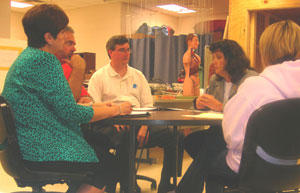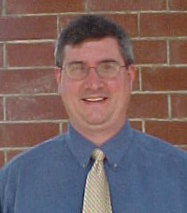Read this op-ed column of mine that was published today by the
Georgia Public Policy Foundation. It can also be found
here.
What's Wrong With Education?By Russ Moore
What’s wrong with education? Unfortunately, enough is wrong to make it prudent, in the interests of space, for one to explain instead what’s right with education.
Skipping over what’s wrong avoids unpleasant topics such as increased spending actually decreases achievement; “teaching the test” lowers perceived relevance; textbooks are sensitivity-focused mush; superintendents are forced to create results that don’t really change anything; “
college prep” prepares students for neither college nor jobs, and too many teachers don’t learn very much about teaching at colleges of education.
What’s right with education is: teachers. Specifically, teachers who persevere no matter how hard policy-makers try to make already unrealistic jobs truly impossible. Those who persevere no matter how apathetic, ungrateful and downright rude students are or how unreasonable their parents can be. Those who persevere no matter how low the pay, how long the hours, how little the funding for meaningful professional development, and how few options teachers have to improve any of the above.
Though we certainly don’t deserve them, this country still has teachers willing to work in a system that fights them at every turn, apparently determined to make sure our children learn something. Policy-makers must realize the power they are holding back and find the E=MC2 of education to convert the critical mass of caring teachers into a truly reforming blast of positive energy.
At every level, the rule-makers’ rule should be to get out of the way by adopting research-based reforms that help teachers enhance their own performance and, by extension, help students. For example, as CEO of
Central Educational Center in Newnan, a national model charter school, I saw the school district apply proven business practices that make sense to use in education – with the full support of local professional educators. The charter school is also a “learning lab,” so the following best practices can reach far beyond our school district’s borders.
First, teachers should be allowed to select the textbooks and curricula they will teach, as long as they are able to meet statewide standards. Mandated statewide and district-wide textbooks should be a thing of the past.
Second, teachers should be freed to work in teams, aligning academic and career/technical curricula to bring students to mastery through performance-based, project-based and work-based (i.e. applied learning) experiences. To that end, teachers must have the time to develop relationships and interact directly with partners from higher education and industry. Encourage these “customers” to help design curricula guaranteed to meet the needs and expectations of employers. In doing so, despite assumptions to the contrary, research shows schools meet the needs of the students and colleges, too.
Third, create a feedback mechanism with teeth. Principals and assistant principals should be more like those CEOs and vice presidents – leaders in the tradition of Jim Collins, author of “Good to Great” – who encourage staff input and insist on consensus before moving forward. The result will be less autocracy and more implementation of suggestions from the “troops,” who then become more engaged in the pursuit of continuous improvement.
Fourth, reform colleges of education by sending them teacher candidates who already have experience in the classroom. The Newnan charter school’s teacher apprentice program has grown by 1,800 percent in four years, allowing the district to “grow your own” teachers and put them in front of real classes at age 18, instead of waiting until their last year of college.
And for the real kickers, here are a couple of proposals that so far are beyond even the Newnan charter school:
Remove pay scales and salary ceilings. That will stop the exodus of teachers who leave the classroom to become administrators, not because they want to, but because they have to in order to support their families. Keep those who want to stay in the classroom by compensating them based on their students’ achievements and their own devotion to classroom action-research, peer-developed professional development, and even peer, student and parent evaluations.
Finally, K-12 superintendents should highlight high-performing teachers as models district-wide. State superintendents should do the same statewide. The state teacher of the year could, for example, be paid as much as the state superintendent (via a special state supplement) for five years as a reward for outstanding work, which will be a tremendous incentive for teachers everywhere.
Keep in mind: As business has proven again and again, the only kind of reform that works involves everyone, especially those who must actually perform the work. For teachers to buy in, they must be involved in developing as well as implementing reform. Education can learn a lot from business, and we will all benefit from a business-style reform process that recognizes and unleashes skilled teachers nationwide. This way, No Child Left Behind won’t also become No Teacher Left Standing
--------------------------------------------------------------------------------
Russ Moore is the former CEO of
Central Educational Center, a national model charter school in Newnan, and runs
Seamless Education Consultants Inc., which helps communities and business-education partnerships adopt a seamless education/workforce development model. The Georgia Public Policy Foundation is an independent think tank that proposes practical, market-oriented approaches to public policy to improve the lives of Georgians. Nothing written here is to be construed as necessarily reflecting the views of the Georgia Public Policy Foundation or as an attempt to aid or hinder the passage of any bill before the U.S. Congress or the Georgia Legislature.
©
Georgia Public Policy Foundation(October 14, 2005). Permission to reprint in whole or in part is hereby granted, provided the author and his affiliations are cited.






